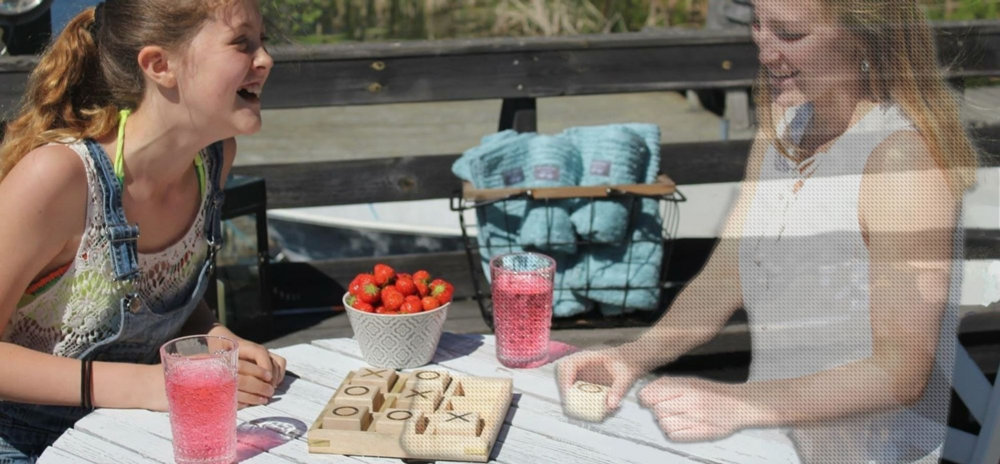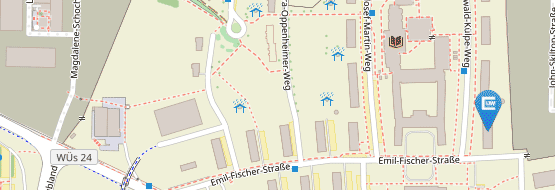Messung und Gestaltung intuitiver Benutzung
Komplexere Technik und heterogenere Benutzergruppen machen intuitive Benutzung zu einem wichtigen Gestaltungsziel. Wir definieren intuitive Benutzung als unbewusste Anwendung von Vorwissen, die zu effektiver und zufriedenstellender Interaktion mit einem minimalen Einsatz kognitiver Ressourcen führt. Für die Theorie intuitiver Benutzung spielt das Konzept der mentalen Verabeitungsflüssigkeit (engl. processing fluency) eine große Rolle, welches über verschiedene Wirkmechanismen die Brücke zur User Experience schlägt.
In unserer Forschung entwickeln wir Methoden zur Messung intuitiver Benutzung:
- den Fragebogen QUESI – QUEStionnaire for the subjective consequences of Intuitive use
- eine Kodierungsmethode für Videodaten: CHAI – Coding Heuristics for Assessing Intuitive interaction
- eine Rhythmus-Zweitaufgabe zur summativen und formativen Evaluation: IntuiBeat-S, IntuiBeat-F
- eine nicht-intrusive Methode zur Erfassung der kognitiven Beanspruchung aus Bewegungsdaten der Hand: ECM – Entropy of Controller Movements (anwendbar auf Bewegungen eines Mauscursors oder VR-Controllers)
Unsere Forschung zur Gestaltung intuitiver Benutzung nutzt verschiedene Ansätze, in denen die “unbewusste Anwendung von Vorwissen“ eine zentrale Rolle spielt:
- Neue Interaktionsformen wie Tangible Interaction (dt. be-greifbare Interaktion) beruhen auf der Idee, unbewusstes Vorwissen über die Manipulation physischer Objekte zu nutzen, um intuitive Interaktionen mit digitalen Daten zu ermöglichen. Neben Studien zur Überprüfung dieser Grundannahme entwickeln wir eine Theorie der differentiellen Vorteile physischer und digitaler Gestaltungselemente (PIBA-DIBA: Physical Is Better At – Digital Is Better At).
- Persuasive Benutzungsschnittstellen helfen ihren Benutzern durch die gezielte Ansprache unbewusster mentaler Heuristiken ihre Ziele trotz mangelnder Selbstkontrolle erfolgreich zu verfolgen (z.B. sich gesund zu ernähren). Hier beschäftigt uns die Frage, wie indirekte persuasive Techniken für die Gestaltung erstrebenswerter Ziele genutzt werden können.
- Die Theorie der image-schematischen Metaphern aus der kognitiven Lingusitik beschreibt unbewusstes Wissen darüber wie abstrakte Konzepte mit physischen Erfahrungen zusammenhängen. Wir entwickeln Methoden für die Gestaltung mit image-schmatischen Metaphern, überprüfen einzelne Metaphern in experimentellen Studien und pflegen eine Datenbank image-schematischer Metaphern (ISCAT – Image Schema CATalogue).
Projekte zum Thema

SPIELEND Nähe auf Distanz erfahren
Im SPIELEND Projekt erforschen wir, wie mit Hilfe von Augmented Reality und E-Textilien ein Gefühl von Nähe zu Familienmitgliedern oder Freund:innen auf Distanz gefördert werden kann. Hierbei erstellen wir ein psychologisches Wirkmodell von zwischenmenschlicher Nähe und Verbundenheit im Spielkontext und entwickeln eine neue Evaluationsmethode. Während der Entwicklung des Spieles werden fortlaufend Einflussfaktoren auf das Näheerleben erforscht, und abschließend das im Projekt entwickelte Spiel im Feld getestet.
Fördergeber
Bundesministerium für Bildung und Forschung (BMBF)
Zeitraum
2023 - 2026
Link zur Projektwebsite
https://spielend.org/
Ausgewählte Publikationen
Allgemein
Reinhardt, D., & Hurtienne, J. (2023). Measuring intuitive use: Theoretical foundations. International Journal of Human–Computer Interaction. https://doi.org/10.1080/10447318.2023.2166204
QUESI
Naumann, A., & Hurtienne, J. (2010). Benchmarks for intuitive interaction with mobile devices. In Proceedings of the 12th international conference on Human computer interaction with mobile devices and services (pp. 401-402). Lisbon, Portugal: ACM. doi:10.1145/1851600.1851685.
CHAI
Reinhardt, D., Kuge, J., & Hurtienne, J. (2018). CHAI: Coding heuristics for assessing intuitive interaction. In A. Marcus & W. Wang (Eds.). Design, User Experience, and Usability: Theory and Practice. DUXU 2018 (pp. 528–545). Cham: Springer. https://doi.org/10.1007/978-3-319-91797-9_38
IntuiBeat
Reinhardt, D., & Hurtienne, J. (2017). Interaction under pressure: Increased mental workload makes issues of intuitive interaction visible. In Proceedings of the 2017 ACM Conference Companion Publication on Designing Interactive Systems (pp. 67–71). New York, NY, USA: ACM. https://doi.org/10.1145/3064857.3079121
ECM
Reinhardt, D., Hurtienne, J., & Wienrich, C. (2020). Measuring mental effort via entropy in VR. In IUI’20: Proceedings of the 25th International Conference on Intelligent User Interfaces Companion (pp. 43–44). ACM. https://doi.org/10.1145/3379336.3381493
Reinhardt, D., Haesler, S., Hurtienne, J., & Wienrich, C. (2019). Entropy of Controller Movements Reflects Mental Workload in Virtual Reality. IEEE Conference on Virtual Reality and 3D User Interfaces (VR2019), 802–808. https://doi.org/10.1109/VR.2019.8797977
Gramlich, J., Pauli, S., Huber, S., Baur, C., & Hurtienne, J. (2022). Fin, Whale, Coin and Flatterer: Exploring tangibles for air traffic control. In TEI’22 Proceedings of the Sixteenth International Conference on Tangible, Embedded, and Embodied Interaction (Article No. 36, pp. 1-13). ACM. https://doi.org/10.1145/3490149.3502260
Reinhardt, D., & Hurtienne, J. (2018). The impact of tangible props on gaming performance and experience in gestural interaction. In Proceedings of the Twelfth International Conference on Tangible, Embedded, and Embodied Interaction (pp. 638–646). New York, NY, USA: ACM. https://doi.org/10.1145/3173225.3173258 [Honorable Mention]
Israel, J.H., Hurtienne, J. & Weber, K. (2012). Be-greifbar oder Virtuell? Der Designer entscheidet [Tangible or virtual? Its the designer’s decision]. In B. Robben & H. Schelhowe (Hrsg.), Be-greifbare Interaktionen [Tangible Interaction] (S. 41-76). Bielefeld: transcript. Link zum Buch
Hurtienne, J., Israel, J. H., & Weber, K. (2008). Cooking up real world business applications combining physicality, digitality, and image schemas. In A. Schmidt , H. Gellersen, E. van den Hoven, A. Mazalek, P. Holleis, & N. Villar (Eds.), TEI'08. Second International Conference on Tangible and Embedded Interaction (pp. 239-246). New York: ACM. doi:10.1145/1347390.1347443
Hurtienne, J., & Arnold, D. (2020). The Naked Truth? Clothing Does Not Influence the Robot Experience. In T. Belpaeme, J. Young, H. Gunes, & L. Riek (Eds.), HRI ’20: Companion of the 2020 ACM/IEEE International Conference on Human-Robot Interaction (pp. 269–271). New York: ACM. https://dl.acm.org/doi/abs/10.1145/3371382.3378362
Reinhardt, D., & Hurtienne, J. (2019). Only One Item Left?: Heuristic Information Trumps Calorie Count When Supporting Healthy Snacking Under Low Self-Control. Proceedings of the 2019 CHI Conference on Human Factors in Computing Systems, 478:1–478:10. https://doi.org/10.1145/3290605.3300708
Tscharn, R., Ly-Tung, N., Löffler, D., & Hurtienne, J. (2016). Ambient Light As Spatial Attention Guidance in Indoor Environments. In Proceedings of the 2016 ACM International Joint Conference on Pervasive and Ubiquitous Computing: Adjunct (pp. 1627–1630). New York, NY, USA: ACM. http://doi.org/10.1145/2968219.2968524
Baur, C., Wienrich, C., & Hurtienne, J. (2022). Form follows mental models: Finding instantiations of image schemas using a design research approach. In: F. Mueller, S. Greuter, R. A. Khot, P. Sweetser, & M. Obrist (Eds.,) DIS’22: Designing Interactive Systems Conference (pp. 586–598). ACM. https://doi.org/10.1145/3532106.3533451
Hurtienne, J., Huber, S., & Baur, C. (2022). Supporting user interface design with image schemas: The ISCAT database as a research tool. In M. M. Hedblom & O. Kutz (Eds.), Proceedings of the Sixth Image Schema Day. CEUR Workshop Proceedings, Vol 3140. http://ceur-ws.org/Vol-3140/
Hurtienne, J., Löffler, D., Hüsch, C., Reinhardt, D., Tscharn, R., & Huber, S. (2020). Happy is up, sad is down. 65 metaphors for design. BIS Publishers. https://www.bispublishers.com/happy-is-up-sad-is-down.html
Löffler, D., Tscharn, R., & Hurtienne, J. (2018). Multimodal effects of color and haptics on intuitive interaction with tangible user interfaces. In Proceedings of the Twelfth International Conference on Tangible, Embedded, and Embodied Interaction (pp. 647–655). New York, NY, USA: ACM. https://doi.org/10.1145/3173225.3173257
Hurtienne, J. (2017). How Cognitive Linguistics inspires HCI: Image schemas and image-schematic metaphors. International Journal of Human-Computer Interaction, 33 (1), 1-20. https://doi.org/10.1080/10447318.2016.1232227
Hurtienne, J., & Reinhardt, D. (2017). Texture metaphors and tangible interaction: No smooth relationship? In Proceedings of the Eleventh International Conference on Tangible, Embedded, and Embodied Interaction (pp. 79–87). New York, NY, USA: ACM. https://doi.org/10.1145/3024969.3024986
Löffler, D., Giron, L., & Hurtienne, J. (2017). Night mode, dark thoughts: Background color influences the perceived sentiment of chat messages. In Human-Computer Interaction - INTERACT 2017 (pp. 184–201). Springer, Cham. https://doi.org/10.1007/978-3-319-67684-5_12
Hurtienne, J., & Meschke, O. (2016). Soft Pillows and the Near and Dear: Physical-to-Abstract Mappings with Image-Schematic Metaphors. In Proceedings of the TEI ’16: Tenth International Conference on Tangible, Embedded, and Embodied Interaction (pp. 324–331). New York, NY, USA: ACM. doi:10.1145/2839462.2839483
Hurtienne, J., Klöckner, K., Diefenbach, S., Nass, C., & Maier, A. (2015). Designing with Image Schemas: Resolving the Tension Between Innovation, Inclusion and Intuitive Use. Interacting with Computers, 27 (3), 235–255. doi:10.1093/iwc/iwu049
Löffler, D., Hess, A., Maier, A., Hurtienne, J., & Schmitt, H. (2013). Developing intuitive user interfaces by integrating users’ mental models into requirements engineering. The 27th International British Computer Society Human Computer Interaction Conference. London: Brunel University. Paper
Hurtienne, J. (2011). Image schemas and design for intuitive use. Exploring new guidance for user interface design (Doctoral dissertation, Technische Universität Berlin). Retrieved from http://opus.kobv.de/tuberlin/volltexte/2011/2970/pdf/hurtienne_joern.pdf
Hurtienne, J., Stößel, C., Sturm, C., Maus, A., Rötting, M., Langdon, P., & Clarkson, P. J. (2010). Physical gestures for abstract concepts. Inclusive design with primary metaphors. Interacting with Computers, 22, 475-484. doi:10.1016/j.intcom.2010.08.009
Hurtienne, J. & Israel, J. H. (2007). Image schemas and their metaphorical extensions – Intuitive patterns for tangible interaction. In B. Ullmer, A. Schmidt, E. Hornecker, C. Hummels, R.J.K. Jacob, & E. van den Hoven (Eds), TEI'07. First International Conference on Tangible and Embedded Interaction (pp. 127-134). New York: ACM. doi:10.1145/1226969.1226996 ***Runner-Up at the TEI Lasting Impact Student Design Award at TEI 2016 ***


